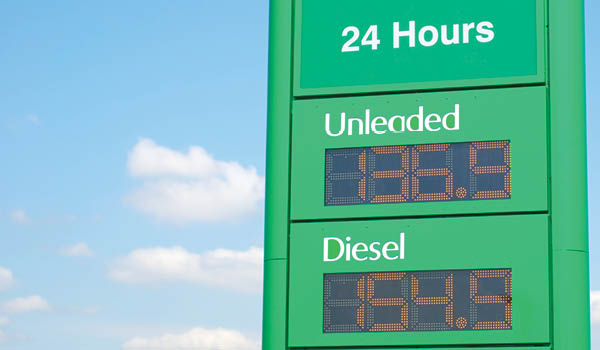Petrol prices decreased significantly in the March quarter, according to the Australian Competition and Consumer Commission’s (ACCC) sixth quarterly petrol report.
The average petrol price in the five largest cities – Sydney, Melbourne, Brisbane, Adelaide and Perth – in the March quarter 2016 was 111.0 cents per litre (cpl), which was 13.4 cpl lower than in the previous quarter and 22.2 cpl lower than in the September quarter 2015.
Rod Sims, ACCC chairman, said motorists benefited from the lowest quarterly petrol prices in inflation adjusted terms since 1999.
“The low petrol prices were due to two main influences: firstly, crude oil prices and international refined petrol prices in inflation adjusted terms fell to lows not seen since 2002 and 2008, respectively,” Mr Sims said.
“Secondly, gross retail margins decreased in the quarter. The ACCC believed that retail margins were unreasonably high in the second half of 2015 and wrote to the major petrol retailers in earlyFebruary 2016 seeking an explanation for the high retail margins.”
The report notes the reasons for increased margins identified by the companies included: time lags in the supply chain amid falling wholesale prices; some retailers’ expected wholesale prices would increase following a period of low prices which limited discounting; and the higher operating and regulatory costs faced by retailers, which meant they required higher margins to operate a sustainable business. The ACCC says it will be further analysing these issues in coming months.
The chart below shows the components of Australian petrol prices in the five largest cities in the March quarter 2016 and the December quarter 2015. It highlights that the largest contributors to the 13.4 cpl decrease in retail prices in the March quarter 2016 were international crude oil prices (down by 8.3 cpl) and retail margins (down by 2.6 cpl).
Components of retail petrol prices in March 2016 quarter and December quarter 2015 in cents per litre, five largest cities

The report noted a number of petrol apps were released during the March quarter, including 7-Eleven’s fuel app and GasBuddy, a US-based crowdsourcing app that allows motorists to report fuel prices.
“The release of these mobile apps, and more apps to come, will allow consumers to make better informed purchasing decisions and reward retailers who discount prices, therefore promoting greater price competition in petrol markets. This should also lead to downward pressure on retail margins,” Mr Sims said.
Prices in Brisbane remain relatively high. In the March quarter 2016, the average petrol price in Brisbane was 114.8 cpl, which was 4.8 cpl higher than the average of the four other largest cities (110.0 cpl). The high relative retail prices in Brisbane are likely to reflect inadequate competition at the retail level. It is to be hoped that greater price transparency can affect the high petrol prices and profits in Brisbane over coming months.
The difference between Darwin prices and the five largest cities has decreased substantially in the last year, following the ACCC report into the Darwin petrol market.
In the year to March 2015 Darwin retail prices were on average 21.3 cpl higher than the five largest cities. This differential decreased substantially in the next four quarters. In the March quarter 2016 prices in Darwin were 9.6 cpl higher than those in the five largest cities, which seems much closer to where they should be, based on historical differentials.
The report also noted that, as with petrol prices, diesel prices in the five largest cities decreased significantly in the March quarter 2016. Quarterly average prices in the March quarter 2016 were 113.7 cpl, a decrease of 11.8 cpl from the previous quarter, and the lowest since the June quarter 1999 in real terms.

